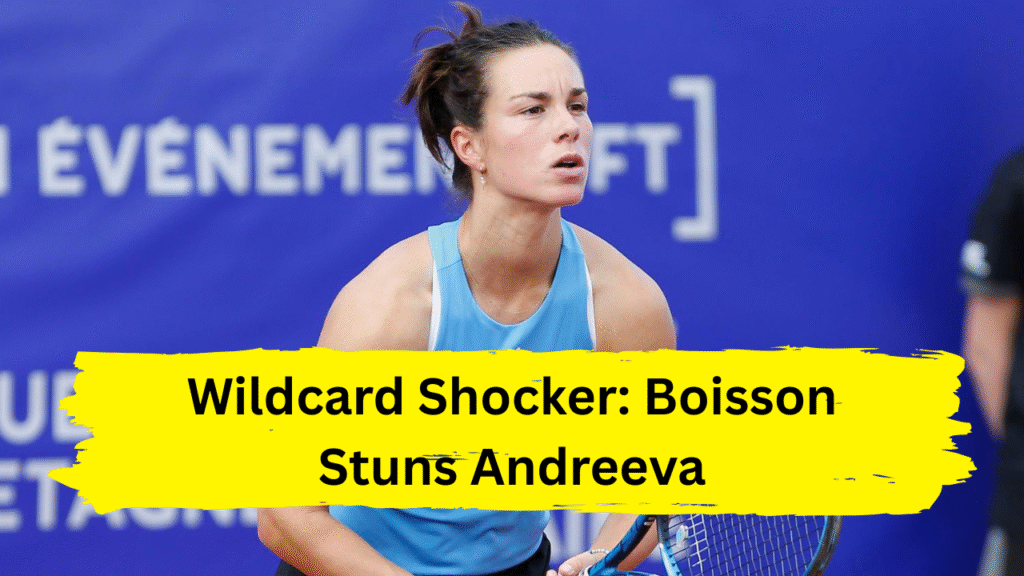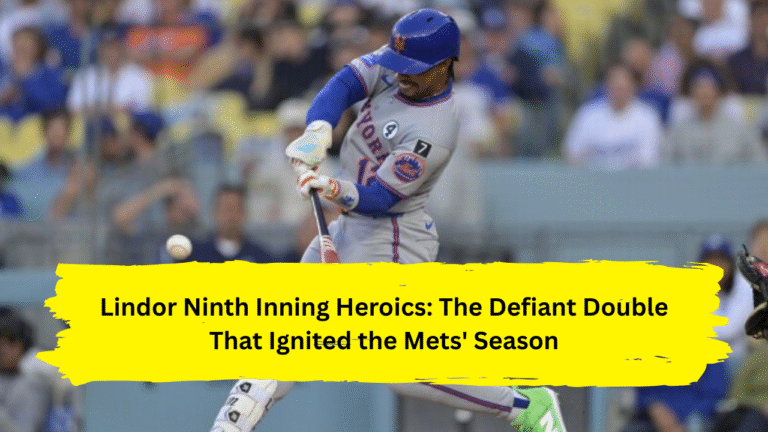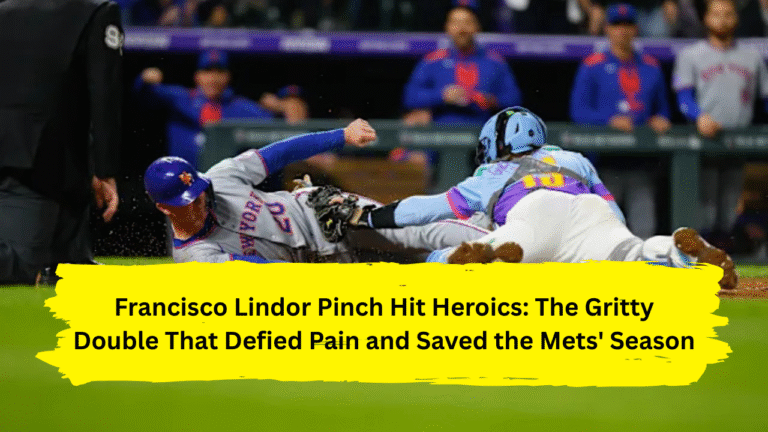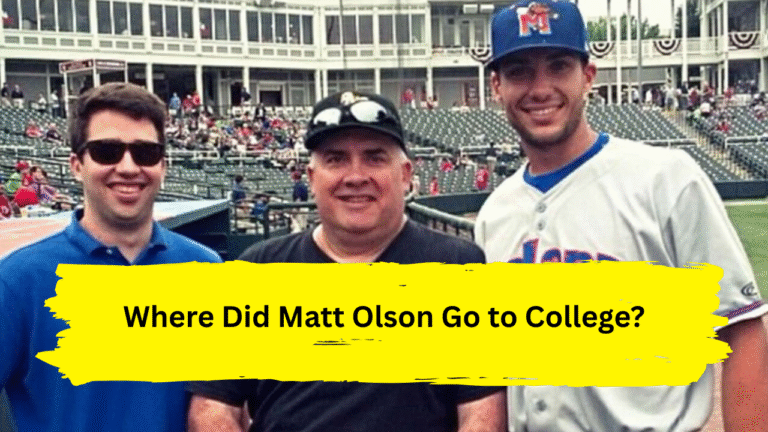
361st-ranked wildcard Lois Boisson just shattered tennis history, stunning phenom Mirra Andreeva at Roland Garros. Discover how this French Open upset unfolded—and why even teen prodigies aren’t immune to pressure. Witness Cinderella’s next act vs. Coco Gauff!
The ball sailed long off Mirra Andreeva’s racket, sealing a double fault that silenced Roland Garros. On the other side of the net, Lois Boisson—a player ranked 361st in the world, a name barely whispered in pre-tournament previews—collapsed to the clay, tears mixing with Parisian brick dust. In that surreal moment, the French Open shock defeat was complete: Tennis’ brightest young star had been dethroned by a qualifier who tore her ACL just one year ago .
If you’ve ever rooted for an underdog, felt the sting of unmet expectations, or wondered if pressure truly cracks even the most gifted phenoms, this match was your answer. Mirra Andreeva, the 18-year-old who’d toppled world No. 1 Aryna Sabalenka and No. 2 Iga Świątek en route to glory at Indian Wells just months ago, stood frozen as Boisson roared toward her ecstatic box . This wasn’t just an upset—it was a seismic quake rattling the foundations of tennis hierarchy. Andreeva’s dream quarterfinal run? Obliterated by a dream run Roland Garros script even Hollywood wouldn’t dare write.
The Perfect Storm: How Pressure and Crowd Fury Unraveled a Prodigy
Let’s rewind to that fraught first set. Andreeva, the world No. 6, had every reason to feel confident. She’d bulldozed past friend and mentor Daria Kasatkina days earlier, coolly stating, “I’m playing against the ball, not the opponent”—a mantra of icy focus . Yet facing Boisson, something splintered. The French wildcard, buoyed by deafening chants of “Lois! Lois!” and waving Tricolor flags, turned Court Philippe-Chatrier into a gladiatorial arena. Andreeva’s frustration simmered as fans applauded her errors and shouted during serves .
“I felt exposed,” Emma Raducanu admitted days earlier after her own loss to Świątek on the same court—a phrase hauntingly prophetic for Andreeva . The Russian teen’s composure frayed visibly: netting a routine forehand volley, then hammering a ball into the stands to earn a warning. When chair umpire Carlos Ramos denied her challenge on a critical break point, Andreeva argued fiercely. The very next point? A double fault that handed Boisson the break. The sequence was a masterclass in how phenom pressure metastasizes .
Boisson’s Resurrection: From ACL Agony to Parisian Ecstasy
To grasp the magnitude of this French Open upset, you must understand Boisson’s journey. Last spring, the FFT awarded her a Roland Garros wild card—a career milestone. Days later, during a minor Paris tournament, she crumpled to the court, her left ACL torn. Nine months of rehab followed—a void where rankings plummet and dreams dim .
Fast-forward to last week. That same wild card now in hand, Boisson faced world No. 3 Jessica Pegula. Down a set, she clawed back, sealing victory with a forehand scream that shook Chatrier. “That roar,” wrote one observer, “made the past 12 months melt into air” . Against Andreeva, she channeled that same defiance. Trailing 3-0 in the second set, Boisson unleashed a backhand winner down the line—a shot that ignited the crowd and ignited her comeback. Her tactical brilliance shone: heavy topspin groundstrokes dragged Andreeva into uncomfortable positions, while deft slices disrupted rhythm. This wasn’t luck; it was a dream run Roland Garros forged in resilience .
The Ghost of Expectations: Why Andreeva’s Ascent Became a Burden
Andreeva’s meteoric rise was supposed to be bulletproof. At 17, she’d won back-to-back WTA 1000 titles in Indian Wells and Dubai—joining Serena Williams and Martina Hingis as the third-youngest to conquer the desert . She’d toppled Sabalenka and Świątek in consecutive matches, a feat only Tracy Austin achieved younger. Yet here lies the paradox of prodigious talent: each triumph tightens the noose of expectation.
Rick Macci, legendary coach of Serena and Sharapova, once praised Andreeva’s “rock solid, right-here-right-now focus” . But against Boisson, that focus flickered. Leading 5-3 in the first set, she failed to serve it out. In the tiebreak, two backhand errors gifted Boisson the set. After racing to a 3-0 second-set lead, she surrendered six consecutive games. The weight of becoming the “next Serena”—a label she never requested—seemed to press down on each swing. As The Athletic noted, Sinner and Alcaraz thrive because they lack “emotional scar tissue” . Andreeva, despite her poise, is human.
The X-Factor: When Home Crowds Become Weapons
Never underestimate a Parisian crowd at Roland Garros. For Boisson, their energy was jet fuel. For Andreeva, it became psychic artillery. Between points, chants drowned out her thoughts. During rallies, gasps followed her mishits. Even the chair umpire pleaded for quiet—to little avail .
This phenomenon isn’t new. Iga Świątek, virtually unbeatable here, calls Chatrier “a place that inspires me” . But for newcomers like Andreeva—or Raducanu, who admitted feeling “uncomfortable” in her Chatrier debut—the stadium’s scale and noise can magnify doubt . Boisson, meanwhile, transformed the chaos into clarity. Each roar propelled her legs to chase down drop shots, her arms to whip crosscourt passes. In tennis, mental fortitude isn’t just absorbing pressure—it’s weaponizing the atmosphere meant to break you.
The Aftermath: Where Legends and Cinderellas Collide
So what now for both? For Boisson, a semifinal clash with world No. 2 Coco Gauff—a rematch of Gauff’s 2022 Roland Garros final run. Gauff, who battled past Madison Keys in a three-set thriller riddled with 101 unforced errors, knows Boisson’s momentum is lethal . “I have a lot more work left,” Gauff cautioned, but the stakes are cosmic: A Frenchwoman hasn’t won here since Mary Pierce in 2000.
Andreeva’s path is one of recalibration. Like Raducanu—who shrugged off her Swiatek loss to focus on grass—Andreeva’s youth remains her superpower . Conchita Martínez, her coach, will likely hone her tactical patience and emotional armor. The phenom pressure won’t vanish, but as Andy Roddick observed, Andreeva still has “30% physical upside” . Wimbledon’s grass, where her fluid movement shines, offers immediate redemption.
Conclusion: The Unscripted Drama That Makes Tennis Eternal
Lois Boisson’s 7-6(6), 6-3 French Open shock defeat of Mirra Andreeva wasn’t just a match—it was a manifesto. A reminder that rankings are numbers, hype is noise, and human spirit—forged in ACL rehabs and hometown cheers—can shackle even the most radiant stars.
As Boisson faces Gauff, and Andreeva regroups for Wimbledon, we’re left with tennis’ essential truth: Mental fortitude writes history more surely than forehands. For every phenom anointed, a wildcard waits in the shadows. For every dynasty, a disruption. So when you watch Boisson step onto Chatrier next, remember—you’re not just witnessing a dream run Roland Garros. You’re witnessing why we love sports: the beautiful, brutal proof that anything is possible when belief meets opportunity. Stare closely. History isn’t made by those expected to triumph—but by those refusing to disappear.
Also Read: Latest Trending News




